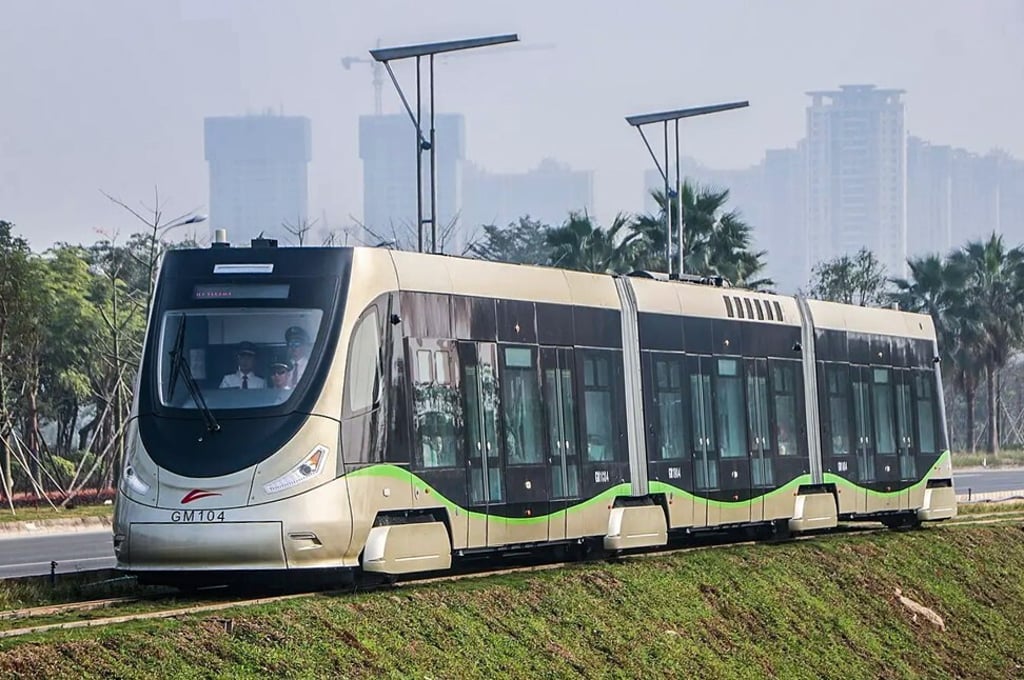China’s carbon neutral goal: Foshan leads a silent revolution in green transport with its hydrogen trams
- A tram running 6.6 kilometres from Cangjiang Road to Zhihu in the Gaoming district has been running since late 2019, powered by “blue” hydrogen
- The project’s first phase links 10 stations in a north-south direction, with the capacity for 1,350 passengers in five tram cars during rush hour

A tram running 6.6 kilometres from Cangjiang Road to Zhihu in the Gaoming district has been operating since late 2019, powered by so-called “blue” hydrogen produced through breaking down methane gas into carbon monoxide and hydrogen.
Eventually, when the price of carbon rises to justify swapping to “green” hydrogen – produced by splitting water into hydrogen and oxygen, using renewable energy – the tram can become a truly zero-emission form of transport.
The project’s first phase links 10 stations in a north-south direction, with the capacity for 1,350 passengers in five tram cars during rush hour. A second phase will connect another 20 stations along an 11-kilometre route running in an east-west direction.
“Foshan is one of the first movers in the country on developing hydrogen vehicles, as part of its long-term strategic plans,” said Jack Fang, customer care lead in China at Ballard Power Systems, which makes the fuel cells for the Gaoming tram system. “The success story of Guangdong province has the potential to be replicated elsewhere.”
